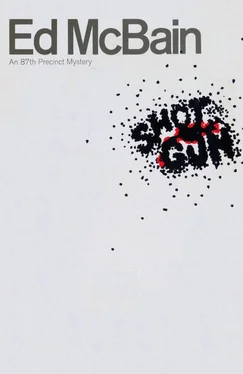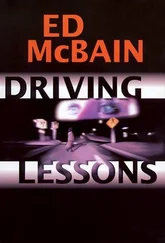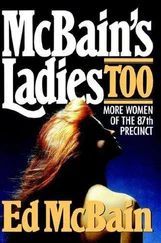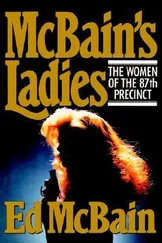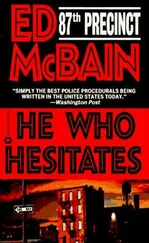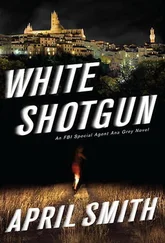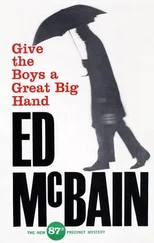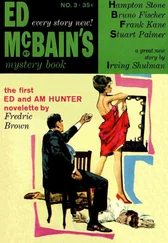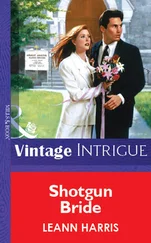“In case I think of anything,” she said to Kling, “how can I reach you?”
“Are you liable to think of anything?” Carella asked.
“Who knows?” Anne said, and smiled at Kling.
“Here’s my card,” Kling said, and fished it from his wallet.
“Bertram,” she said, reading the card. “I don’t know a single person in the entire world named Bertram.”
“Well, now you do,” Carella said.
“Yes,” she said, still looking at Kling. “Now I do.”
When they got back to the squadroom, Andy Parker told them the FBI had sent a teletyped report on the fingerprints dispatched to them last Saturday. They had nothing on Rose or Andrew Leyden, and they had also come up negative on the wild prints. This meant that the killer, whoever he was, had no police record, nor had he ever served in the armed forces of the United States. It also meant, for whatever such information was worth at the moment, that the killer had probably never held a government job either, since most government agencies required fingerprints of their employees. By twelve noon that Monday, it looked as though the case was not going to be such a pushover.
The shotgun found in the dead man’s hands had been a 12-gauge pump type fitted with a barrel for 2 ¾-inch shells. Its capacity was six shells. Two of those had been blasted into the face of Rose Leyden, and another two into the face of her husband. A spent cartridge case, unejected, had been found in the receiver of the gun. Two unfired shells were below, waiting to be pumped into the chamber. The shells were 12-gauge Remington Express with Number 2 shot, the largest shot available. Two such loads fired into anyone’s face at close range were entirely capable of causing complete destruction. The police laboratory had identified the weapon for Carella and also provided him with a manufacturer’s serial number. At ten minutes after 12:00 that Monday, he called the manufacturer’s representative in the city, gave him the serial number of the gun, and asked if he could tell him which retail outlet had sold it. The man on the phone asked him to wait a moment, and then came back to the phone and said he would have to look it up, and could he call Carella back? Carella gave him the number at the squadroom, and then sent out for a Western on a hard roll. He had finished the sandwich and was drinking his second cup of coffee when the telephone rang.
“87th Squad, Carella,” he said.
“Mr. Carella, this is Fred Thiessen.”
“Hello, Mr. Thiessen,” Carella said. “Did you come up with anything?”
“Yes, I have. Let me just check that serial number again, may I? I don’t want to make any mistakes on this.”
“It was A-37426,” Carella said.
“A-37426,” Thiessen said, “Yes, that’s what I’ve got. Well, I checked our invoices for the month of August, which was when that series must have gone out to retailers. We’re already shipping the 376s, in this area at least, so I figured this must have been August or so.”
“Was it?”
“Yes. We shipped that gun — it’s our 833K, by the way — together with a .410 gauge single-shot, and two bolt-action repeaters. This was on August fourth.”
“To whom did you ship it?”
“Oh, yes, we also shipped our new 20-gauge model, with the selective choke tube, on the same date.”
“To whom, Mr. Thiessen?”
“The shipment went to Paramount Sporting Goods.”
“In Isola?”
“No, sir. In Newfield. Across the river, in the next state.”
“Would you have the address handy?”
“Yes, it’s 1147 Barter.”
“Well, thank you very much, Mr. Thiessen, you’ve been very helpful.”
“Was one of our guns used in a crime?”
“I’m afraid so,” Carella said.
“We’d appreciate it if our company name wasn’t mentioned to the press.”
“We don’t generally release that kind of information anyway, Mr. Thiessen.”
“Thank you.”
“Thank you,” Carella said again, and hung up.
The fact that the shotgun had been purchased in the town of Newfield, across the river, seemed to indicate that the murderer knew at least something about gun laws. For whereas these laws varied widely throughout the US of A, making it possible for hunters (or sometimes murderers) to buy weapons either here or there with relative ease, the law in the city for which Carella and Kling worked was quite stringent. It required that anyone wishing to possess or purchase a rifle or a shotgun needed a permit, and it specifically denied such permit to:
(1) Anyone under the age of eighteen, or
(2) Anyone who had been convicted of a felony or a misdemeanor, or
(3) Anyone who had been confined to a hospital for mental illness, alcoholism, or drug addiction unless now declared sound by a specialist in psychiatric medicine, or
(4) Anyone who suffered from any physical defect that would make it unsafe for him to handle such weapons, or
(5) Anyone who was a mental defective or a habitual drunkard or a narcotics addict, or
(6) Anyone who had been dishonorably discharged from the military service by reason of an action found constituting a felony or a misdemeanor.
Moreover, application for a permit had to be accompanied by two photographs taken within thirty days prior to filing, and fingerprinting of the applicant was mandatory.
It was a tough law, and a good law.
In the town of Newfield, however, across the river, you could buy a rifle or a shotgun over the counter of any store selling them, so long as you had the money necessary to complete this act of commerce. If you chose to carry the weapon back across the river and into the city, the law required that application for a permit be made within forty-eight hours and that the gun be left at your resident precinct until you could produce the proper permit and registration certificate. But if you had bought a shotgun in Newfield and intended to shoot two people in the face, it is doubtful that you would even consider registering the gun once you got back to the city.
Paramount Sporting Goods was in the downtown section of Newfield, in a triangular-shaped business area bordered by Chinatown, the railroad marshaling yards, and an Italian ghetto. The owner of the shop was a pleasant moon-faced man named Abe Feldman. When they walked in, he was assembling an order for a high-school football team, assorting jerseys according to size, stacking shoulder pads and mouthpieces, his counter covered with all the plastic armor needed in that warlike game. Carella and Kling introduced themselves, and Feldman immediately looked worried.
“What’s the matter?” he asked. “What happened?”
“This has nothing to do with you, Mr. Feldman. We’re investigating a murder, and—”
“Oh, my God!” Feldman said.
“... we have reason to believe the murder weapon was purchased in your store. I wonder—”
“Oh, my God!” he said again.
“... I wonder if you’d be able to dig out your sales slips—”
“When was it?” Feldman asked.
“Well, the gun was shipped to you on August fourth, so it would have to be anytime after that.”
“August?”
“Yes.”
“I already got my slips for August and September put away.”
“Would they be difficult to get at?”
“Well, I got them in the back. There’s such a chazerai back there, believe me, I hate to go in there sometimes.”
“Well, this—”
“Also, you caught me right in the middle. I got a whole football team here I’m trying to get ready.”
“Well, this is a murder case,” Kling said gently.
“This is murder right here,” Feldman said, indicating the equipment covering the counter top. “All right, come on. If you can stand it, I can stand it.”
Читать дальше
